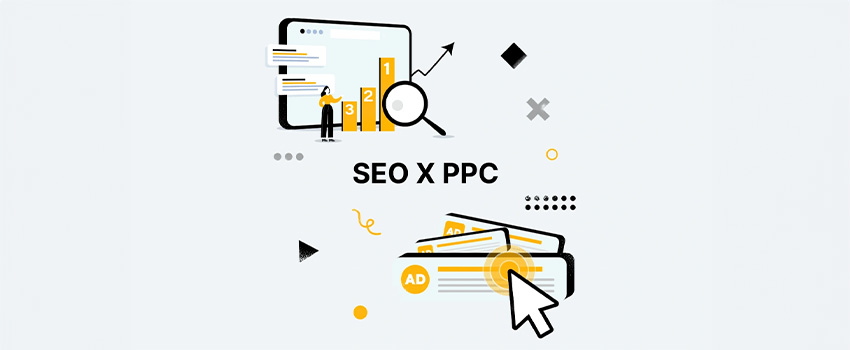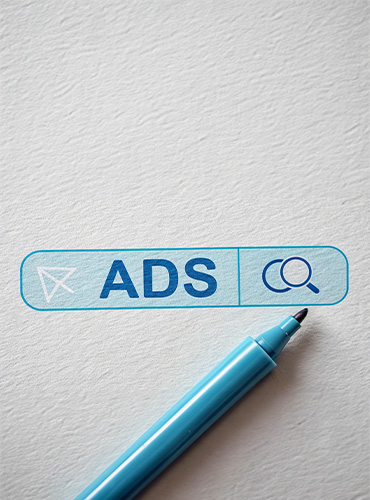
Paid search and SEO together drive 68% of website traffic. Most businesses treat these channels as separate strategies, missing the real opportunity that unfolds when they work as one system.
SEO builds your long-term online reputation. Pay-Per-Click (PPC) ads deliver quick wins and immediate visibility. What happens when these approaches unite? They create a full-funnel marketing system that attracts, nurtures, and converts customers at every stage of their journey.
SEO serves as the foundation for all online marketing efforts. Through strategic keyword research and technical improvements, it builds a strong framework that allows other marketing initiatives to perform better. PPC and SEO services create something remarkable when combined—they don’t just add up, they multiply.
The numbers tell the story. Global ad spending will hit $681.39 billion in 2024. Businesses make an average of $2 in revenue for every $1 spent on Google Ads. Combining these strategies isn’t just smart marketing—it’s essential for sustainable growth.
We’ll show you exactly how to unite both channels into a powerful, integrated marketing strategy that delivers consistent results immediately and builds lasting value over time.
Understanding SEO and Paid Ads
Each strategy serves distinct purposes in digital marketing. Understanding how they work individually reveals why their combination creates such powerful results.
Search Engine Optimization (SEO) improves your website’s quality and visibility to increase organic traffic from search engines. Unlike paid methods, SEO targets unpaid search results—the “organic” listings that appear naturally.
SEO operates through three core stages:
- Crawling: Search engines deploy automated bots called "crawlers" to discover content across the web by following links between pages
- Indexing: Crawled pages get analyzed and stored in the search engine's database, making them eligible to appear in search results
- Ranking: Search engines determine which pages best match a user's query based on hundreds of factors including relevance, quality, and user experience
Effective SEO involves several key components: keyword research to target terms your audience searches for, on-page optimization of content and structure, off-page strategies like building backlinks from authoritative sites, and technical improvements to help search engines access and understand your content.
What are paid ads and how they function
Paid advertising encompasses all marketing where businesses pay to place content directly in front of targeted audiences. Digital advertising primarily refers to Pay-Per-Click (PPC) advertising, where advertisers pay each time someone clicks their ad.
Most paid ad platforms operate on an auction system where advertisers bid against each other for available ad space. Winning ads get determined not just by bid amount but also by quality factors and relevance to users.
Common pricing models include:
- Pay-per-click (PPC): You pay when someone clicks your ad
- Cost-per-mille (CPM): You pay per thousand impressions
- Cost-per-action (CPA): You pay when users complete specific actions
- Cost-per-view (CPV): You pay when users watch your video ad
Paid ads offer granular targeting options based on demographics, interests, behaviors, and search intent, allowing marketers to reach highly specific audiences.
Key differences between SEO and PPC
Timing creates the most significant contrast between these approaches. PPC delivers immediate visibility and traffic as soon as campaigns launch, whereas SEO typically requires three to six months before showing meaningful results.
Placement differs substantially—paid search results appear at the top of search pages with “Ad” or “Sponsored” labels, while organic listings appear below them.
Cost structure creates another fundamental distinction. With organic SEO, you don’t pay when someone clicks on your listing, though implementing SEO strategies requires investment in expertise and content development. PPC requires ongoing payment for each click, with campaigns stopping immediately when funding ends.
Traffic sustainability varies between approaches. SEO results compound over time as your optimization efforts grow, creating lasting value, whereas PPC traffic stops when campaigns end. This makes SEO more cost-effective for long-term strategy, despite requiring patience and consistent effort.
Measurement differs significantly. PPC platforms offer robust, immediate tracking with clear attribution of conversions to specific ads. SEO measurement proves more complex, often requiring manual calculation and attribution across longer timeframes.
These fundamental differences help businesses determine when and how to implement each strategy—or better yet, how to make them work together effectively.
Why SEO and PPC Work Better Together

Paid search and SEO create something far more powerful than either strategy alone. These channels function as two interdependent halves of a single strategy—each enhancing the other’s effectiveness.
Covering more real estate on search results
Google displays both your paid ad and organic listing for the same search query? You’re doubling your visibility. This domination of search results creates a measurable impact on user behavior.
Studies show that when a brand appears in both paid and organic listings, the clickthrough rate for the first result decreases by 30% for competitors. Your multiple positions push competitors further down the page, increasing your chances of capturing user attention. With AI-powered search results and featured snippets reducing scrolling behavior, appearing in multiple places becomes even more crucial.
This “triple crown” approach—paid ads, organic listings, and featured snippets—mirrors what major brands like Amazon achieve for competitive keywords. The result? Complete control over search visibility.
Combining immediate results with lasting growth
PPC delivers immediate visibility and precise targeting for quick wins. SEO builds lasting organic presence that compounds over time. This combination creates a resilient marketing approach where paid ads generate immediate traffic while your organic foundation develops.
This integration provides protection against algorithm changes and market shifts. As one marketing expert notes, “Paid search offers a level of short-term control that organic lacks. You can easily shift paid budgets around, but organic can take longer to recover from a hit”.
Your business stays visible regardless of external changes.
Building trust through consistent presence
Potential customers see your business appearing in multiple search positions and three things happen:
- Brand recognition strengthens through repeated exposure
- Perceived authority increases as users associate multiple listings with market leadership
- Trust develops more quickly, particularly when messaging remains consistent across channels
This effect is measurable. Having both organic and paid listings on the same SERP improves overall clickthrough rates as prospective customers become more likely to engage with your content.
The data confirms this approach works. One case study reported a 138% increase in total paid conversions alongside a 159% increase in organic traffic after implementing an integrated strategy.
Search behavior evolves with AI and featured snippets reducing organic click opportunities. The strategic alignment of SEO and paid advertising becomes essential for sustainable growth.
Tactical Ways to Combine SEO and Paid Ads
Theory only gets you so far. Here are practical tactics that show exactly how paid search and SEO work together for measurable results.
What’s the biggest challenge in SEO? Identifying which keywords actually drive revenue rather than just traffic. PPC campaigns solve this puzzle by generating fast, reliable conversion data.
Your paid campaigns reveal the truth. When a specific keyword converts at four times the rate of a broader term, that’s precisely where your SEO efforts should focus. This approach ensures you’re building content around terms with proven business value rather than vanity metrics.
PPC data allows you to calculate potential SEO ROI before investing significant resources:
SEO ROI = (Organic clicks gained × PPC conversion rate × Customer value) − SEO cost
Consider this example: targeting a keyword costs $30,000 monthly in ads, but ranking organically would capture roughly 33% of that traffic. You’re effectively generating $9,000 in “free” conversions every month.
Test headlines and CTAs with PPC before SEO rollout
PPC provides the perfect testing ground for SEO content. Paid campaigns deliver immediate feedback, allowing you to determine which headlines and calls-to-action drive the highest engagement before implementing them in your SEO strategy.
Why does this matter? Personalized CTAs convert 42% more visitors than generic ones. Testing variations through paid channels first helps you avoid the lengthy wait times typically associated with SEO changes.
Retarget SEO visitors with paid ads
Organic traffic brings visitors who aren’t ready to convert. The reality? 96% of website visitors typically leave without taking action. Combining your channels through retargeting creates a powerful conversion path.
Retargeting campaigns serve tailored ads to previous organic visitors as they browse other websites. This approach keeps you top-of-mind and gradually nurtures prospects toward conversion.
The results speak for themselves: companies implementing this strategy report 34% lower acquisition costs and 1,300% ROI on retargeting campaigns.
Use SEO content to support PPC landing pages
PPC landing pages often underperform because they fail to answer visitors’ questions. Your SEO team already has these answers through content research.
Google’s People Also Ask (PAA) sections provide a ready-made FAQ list that can boost conversions on PPC landing pages. Including these common questions with concise answers directly addresses visitor concerns and improves quality scores.
This creates a virtuous cycle—SEO-informed landing pages improve PPC performance, which generates more data for refining your SEO strategy.
Aligning SEO and PPC for Full Funnel Coverage
Creating a complete customer journey means deploying SEO and paid search strategically at each funnel stage. This alignment guides prospects smoothly from discovery to purchase.
Top-of-funnel: awareness through paid ads
Your potential customers haven’t identified their specific problems yet. Paid ads excel at capturing attention and introducing your brand during this awareness stage. Research shows paid ads effectively push your message in front of the right people, quickly filling gaps at the top of your funnel.
Maximum effectiveness requires:
- Awareness campaigns on Meta or YouTube promoting video content
- Broad, informational keywords aligned with audience interests
- Focus on impressions, reach, and CPM rather than immediate conversions
Paid search creates that crucial first impression, positioning you as a solution even before prospects recognize their needs.
Middle-of-funnel: education through SEO content
Prospects start researching solutions—SEO takes center stage here. During this consideration phase, users actively seek information, making educational content vital. They’re comparing options and narrowing choices.
Your SEO strategy should create:
- Comparison pages and detailed service descriptions
- Blog posts and guides answering specific questions
- Case studies showing real-world applications
Middle-funnel content bridges the gap between awareness and decision, serving as the foundation that transforms interest into buying intent.
Bottom-of-funnel: conversion through retargeting
Prospects reach the decision stage, having identified what they want. Combining SEO and paid strategies maximizes conversions here. Retargeting ads help close leads who initially found you through SEO.
At this crucial point:
- Deploy personalized email campaigns based on previous interactions
- Create high-intent landing pages designed for conversion
- Use retargeting ads that gently remind visitors what they're missing
This integrated approach covers every touchpoint. Given that 92% of consumers visiting a retailer’s website for the first time aren’t ready to buy, a full-funnel strategy using both SEO and paid search becomes essential for growth.
Tracking and Optimizing Performance Together
Successful integration demands measurement. Your combined search efforts need systems that connect data sources and reveal the complete performance picture.
Linking Google Ads with Search Console reveals how paid and organic listings work together for identical search queries. This integration shows which keywords perform well organically, helping you adjust paid search bids for smarter budget management.
The setup process is straightforward: navigate to the Tools icon in Google Ads, click “Data manager,” select “Search Console,” and follow the linking steps. This connection transforms separate data streams into actionable intelligence.
Set shared KPIs for both SEO and PPC
Focus on metrics that matter across both channels:
- Conversion rates and cost-per-acquisition (CPA)
- Click-through rates (CTR)
- Overall revenue generated
- Quality Score improvements
These shared metrics determine which channel delivers better value for specific keywords, enabling smarter budget allocation. The goal isn’t choosing between SEO and PPC—it’s optimizing both for maximum impact.
Review and adjust based on combined insights
Regular meetings between SEO and PPC teams create opportunities for real-time strategy adjustments. Algorithm updates affect both channels differently—when organic rankings drop, PPC maintains visibility while you address SEO issues. When PPC shows zero conversions for specific keywords, you can deprioritize them in SEO efforts.
This coordinated approach protects against negative impacts on either channel. Data analysis drives every decision, ensuring your integrated strategy adapts quickly to market changes and search behavior shifts.
Conclusion
SEO and paid advertising create a marketing strategy greater than the sum of its parts. These two channels complement each other perfectly—SEO building the long-term foundation while PPC delivers immediate results and visibility.
The data confirms what we see with our clients. Companies implementing integrated strategies experience significantly higher conversion rates, lower acquisition costs, and stronger brand recognition. Treating these channels as isolated tactics rather than parts of a unified approach means missing substantial growth opportunities.
This combined approach protects your business against algorithm changes, market shifts, and competitive pressures. When organic rankings temporarily drop, paid ads maintain your visibility. When paid costs rise in competitive markets, strong organic rankings reduce your dependence on advertising budgets.
The practical tactics we’ve shared—from using PPC data to guide SEO keyword selection to retargeting organic visitors with paid ads—provide your roadmap for implementation. Aligning both channels across your marketing funnel ensures you connect with potential customers at every stage of their journey.
Success depends on measurement. Unified tracking systems and shared KPIs allow you to see the complete picture of how users interact with both paid and organic listings. This view enables smarter budget allocation and strategy refinements.
The future belongs to businesses that break down silos between channels. This integrated approach creates sustainable growth that balances immediate results with long-term value—the formula for ongoing success in an increasingly competitive digital landscape.
Partner with us and watch your business achieve the sustainable growth you’ve been working toward.




